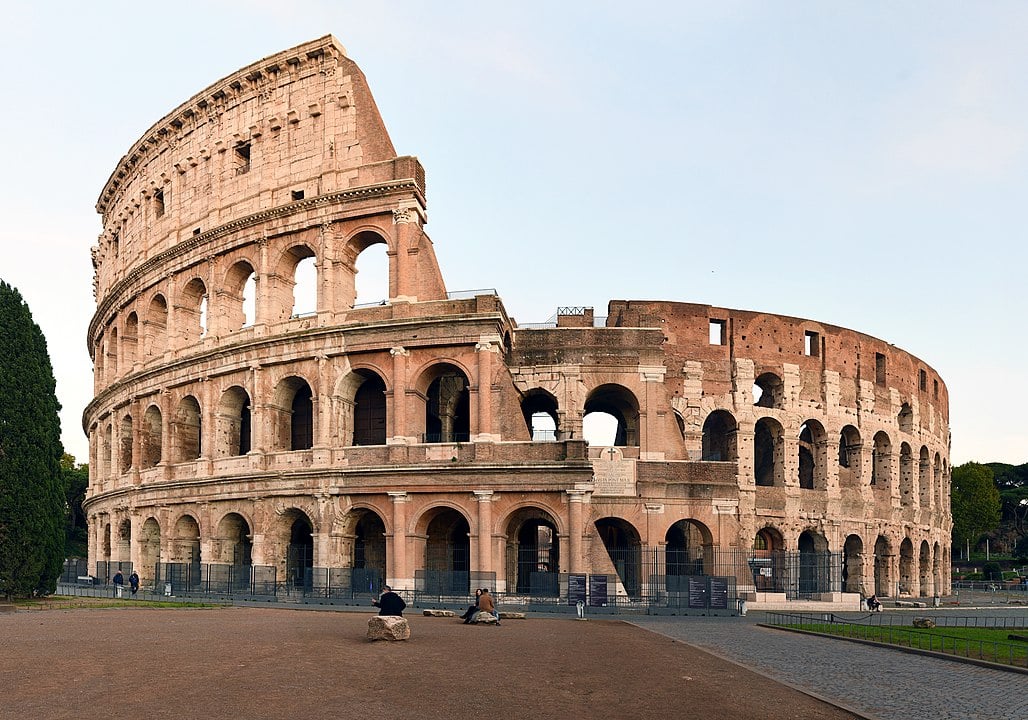

Rome—just the name conjures images of strength, might, and architectural marvels.
But among its most iconic structures, the Colosseum, a true monument of ancient engineering, hides a story that goes far deeper than gladiator fights, Christian martyrs, and imperial spectacles. It is a story of conquest, enslavement, and mistreatment, as many Jewish captives were involved in its construction. This was an intentional act of subjugation by the Flavian emperors, ensuring that this monument of Roman might would be forever connected with the struggle of those who dared oppose Roman supremacy in the Mediterranean.
Before the dust even began to settle after the brutal First Jewish-Roman War and the Siege of Jerusalem in 70 AD, the next phase of the Roman plans to punish those “irresponsible” Jews was set in motion. The Roman legions, under the command of a young Titus, conquered and sacked the city, destroying the Second Temple—a site of the utmost spiritual significance for every Jew. Imagine the weight of the treasures, the gold, the silver, the sacred artifacts, confiscated and paraded through the streets of Rome.
One can recognize this by looking at the triumphal display on the Arch of Titus. These confiscated treasures weren’t there just for display. They also became, quite literally, the money for the construction of the Colosseum.
Vespasian, the father of Titus and Roman Emperor, needed to establish his new dynasty by doing something big; erasing Nero’s decadent excesses and the scars of the fire that his tenure left behind.
Of course, what better way to do something like that than to fund a monumental public project that was going to be the Roman equivalent of the Athenian Acropolis, a symbol of Roman power? Soon, the Colosseum became a colossal imperial statement of total victory against the Jews, with its foundations quite literally cemented with what was left from the war in Judea.

While our history books rightly celebrate the Roman architectural genius, it is crucial to remember the raw human energy and pain that built the Colosseum. The muscle, the sweat, the blood, the sheer arduous labor came in large part from the tens of thousands of Jewish captives, who were brutally enslaved during that devastating war.
Can you even begin to imagine the scale of human pain as thousands of ordinary people were forcefully moved from Judea to Rome to work day and night for such a monumental task? Estimates suggest anywhere from 50,000 to a staggering 100,000 Jewish prisoners were taken away from their homes and dragged to Rome.
These were real people, with real lives. Skilled artisans, farmers, thinkers from a thriving ancient society, now forced into the back-breaking work of quarrying colossal blocks from Tivoli (East of Rome), moving them across tens of kilometerscolosseum in the Italian peninsula, and meticulously fitting them into place under the scorching sun.
What makes it even more tragic is the fact that the same people who had witnessed the destruction of their holiest temple were now forced to erect a monument celebrating that very triumph. One can only wonder how devastating, exhausting, and heartbreaking this might have been for all those innocent people.

This often-forgotten chapter in the Colosseum’s story shows the brutal reality of ancient empires. What we now admire is evidence of the cruelty of war. The forced labor, the enslavement, and the collective pain are still deeply ingrained in Jewish historical memory.
For many, the Colosseum is still a site that stirs unanswered questions about the historical fate of the Jewish people, survival, and the strength of the human spirit in the face of unspeakable suffering. Does acknowledging this darker truth somehow diminish the Colosseum’s splendor? Or perhaps, elevate it, making its continued existence all the more powerful?
Ultimately, the Colosseum remains a monumental testament to human ingenuity, showcasing the power of ancient Rome. However, to truly understand its essence and full significance, we must look beyond the romanticized images of gladiators and emperors. We must acknowledge and truly recognize the often-overlooked contributions of the Jewish people whose lives and hard labor were tragically linked to its creation.
